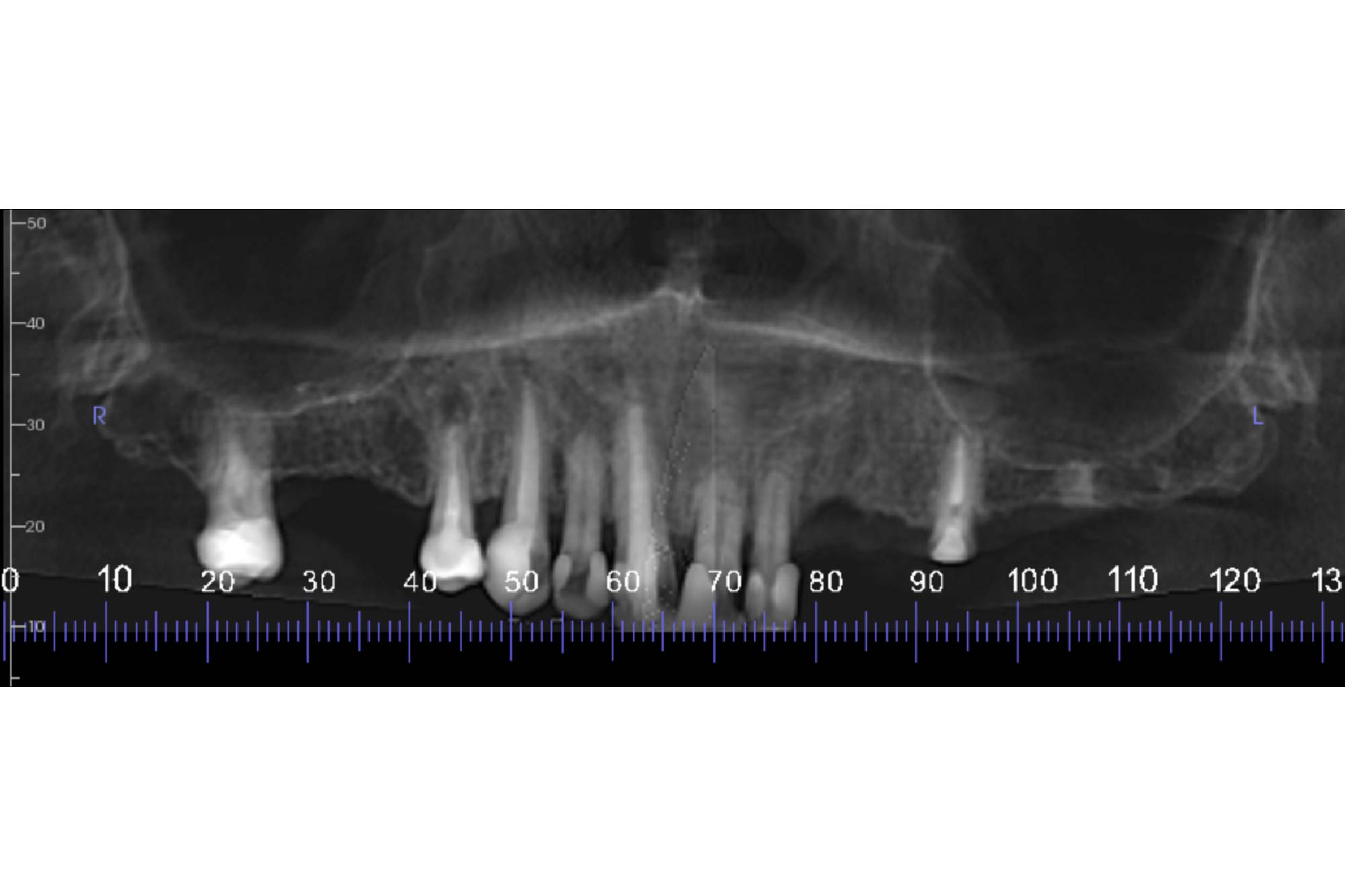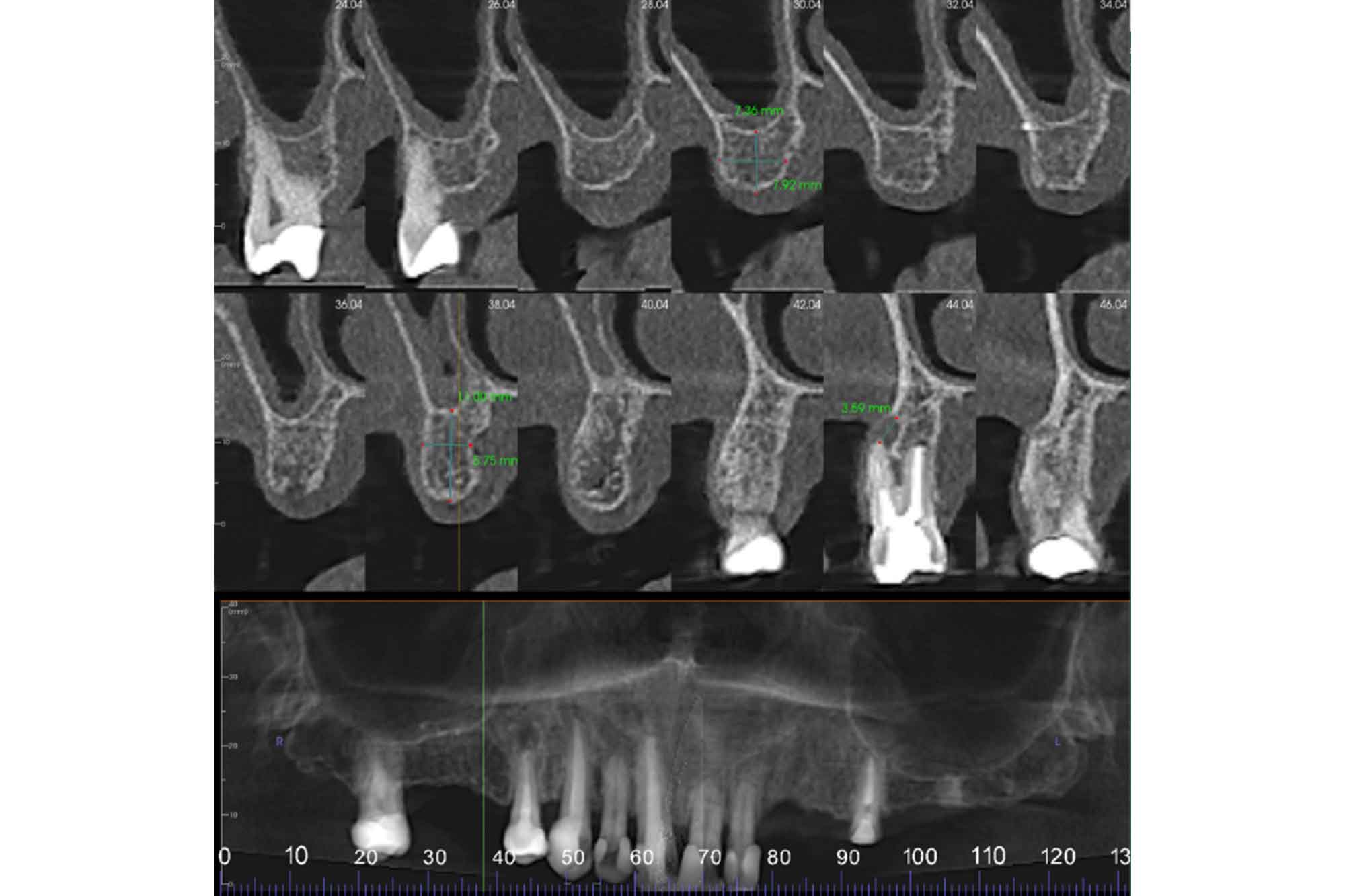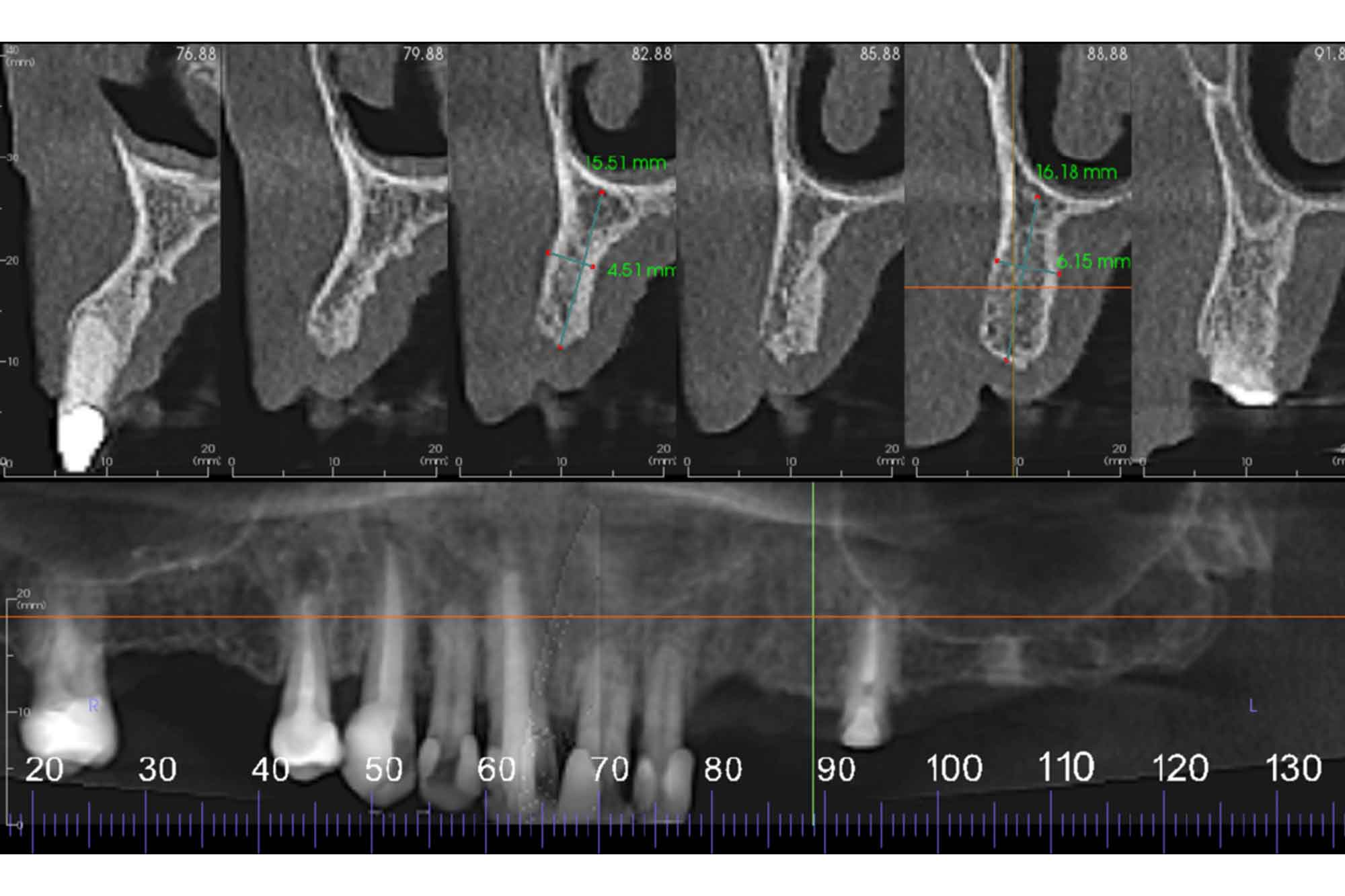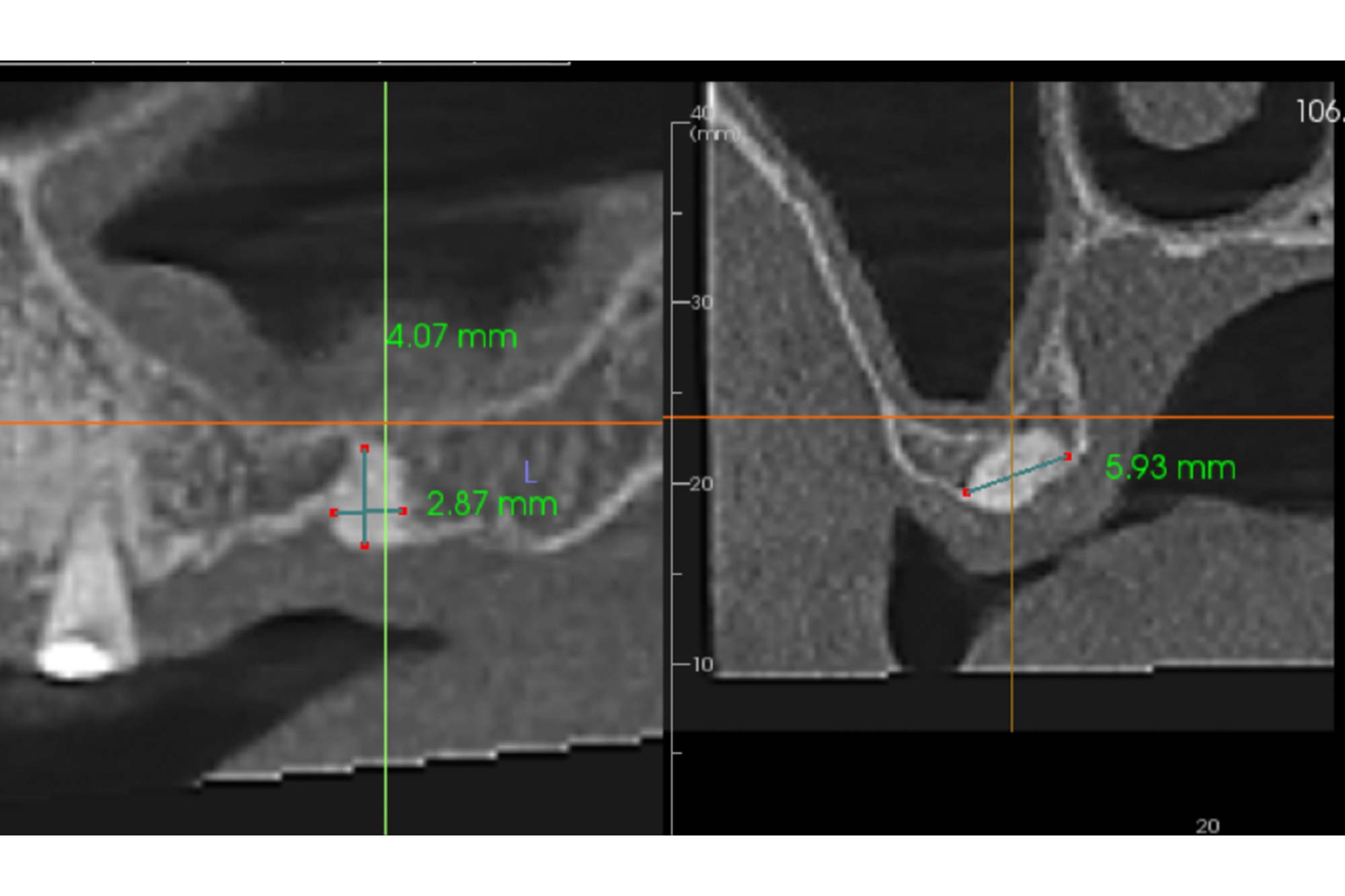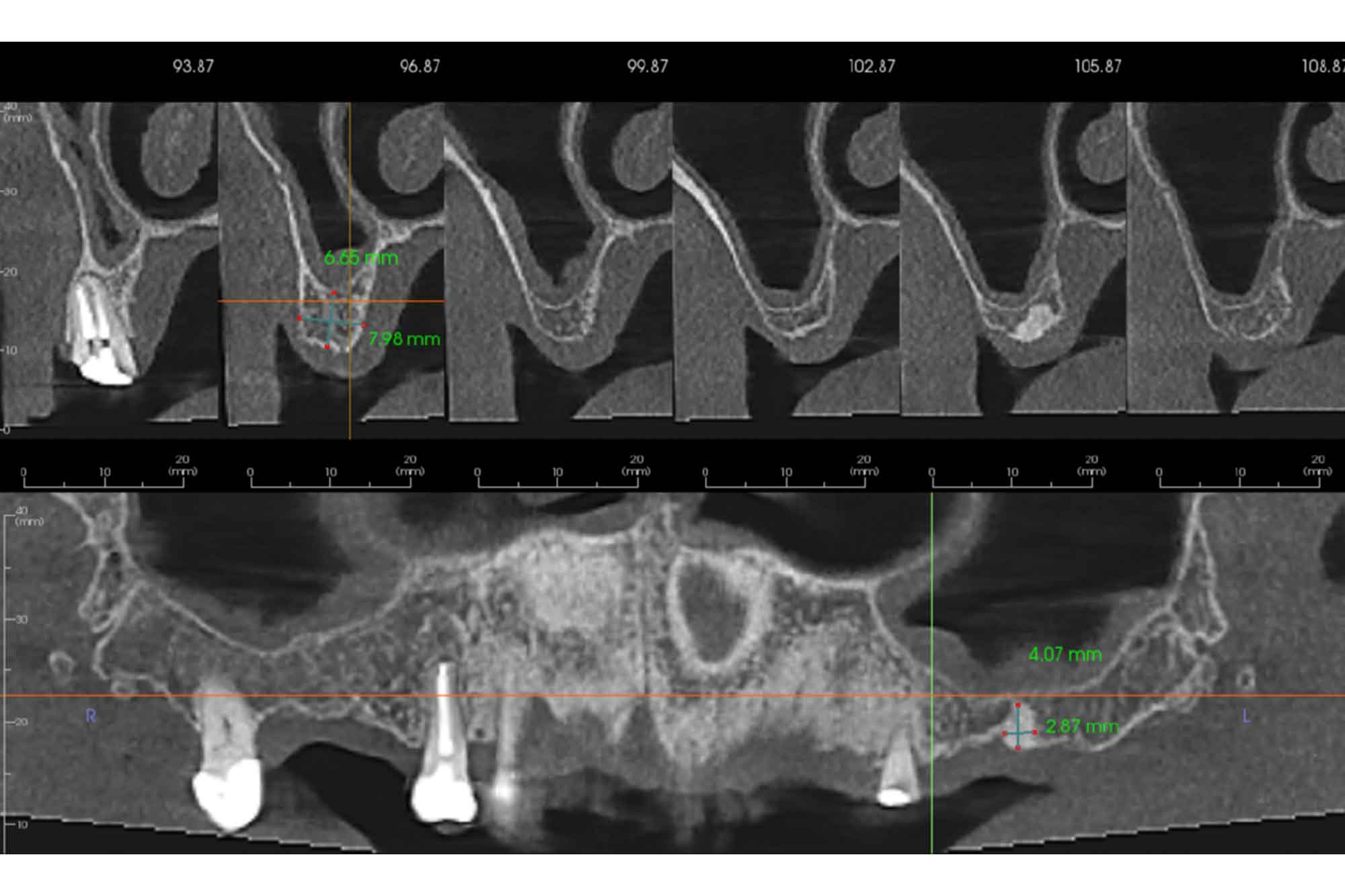 Alex Woodham explains why it is good practice to assess the entire data set systematically when clinically evaluating a CBCT scan.
Alex Woodham explains why it is good practice to assess the entire data set systematically when clinically evaluating a CBCT scan.
Findings
The edentulous regions have mild to moderate vertical bone resorption with moderate density cortical and trabecular bone.
The UL7 edentulous ridge has a well-defined radiopacity measuring 4 x 3 x 6 mm. This extends from the alveolar crest to the sinus floor. It is a dense bony island or retained root tip.
The UR3, UR1 and UL5 are root treated to apices with normal periodontal ligament spaces.
The UR4 is root treated. The buccal root filling is short of the apex with an apical radiolucency 3-4 mm wide. This is probably an apical granuloma or radicular cyst secondary to chronic apical periodontitis. The palatal root canal is filled to the apex with an apical radiolucency 0.5-1 mm wide.
The UL1 has external root resorption, mostly on the palatal side of the root. Approximately a third to half of the root is resorbed. There is no apical radiolucency but the root may be partially ankylosed to the bone. The UL2 also has external root resorption but to a lesser extent.
Both maxillary and left sphenoid sinuses have mild generalised thickening of the mucosal linings. There is no expansion or bony erosion of the sinus walls.
Learning from this case
It is good practice to assess the entire data set systematically when clinically evaluating a CBCT scan.
A thorough approach to examining the volume prompts appropriate management for the patient of any known or incidental findings.
For more information visit dental-scan.co.uk.


